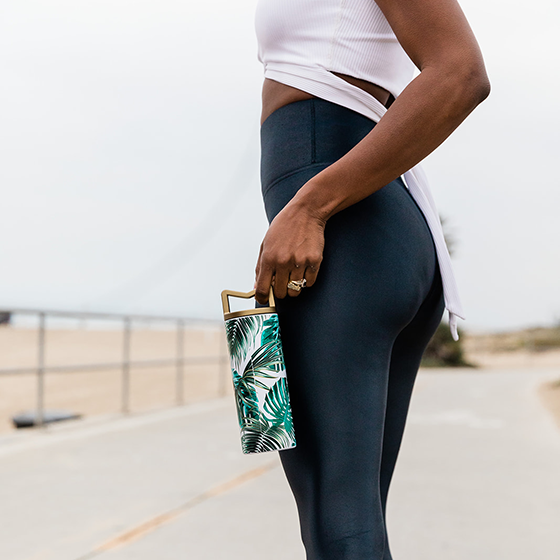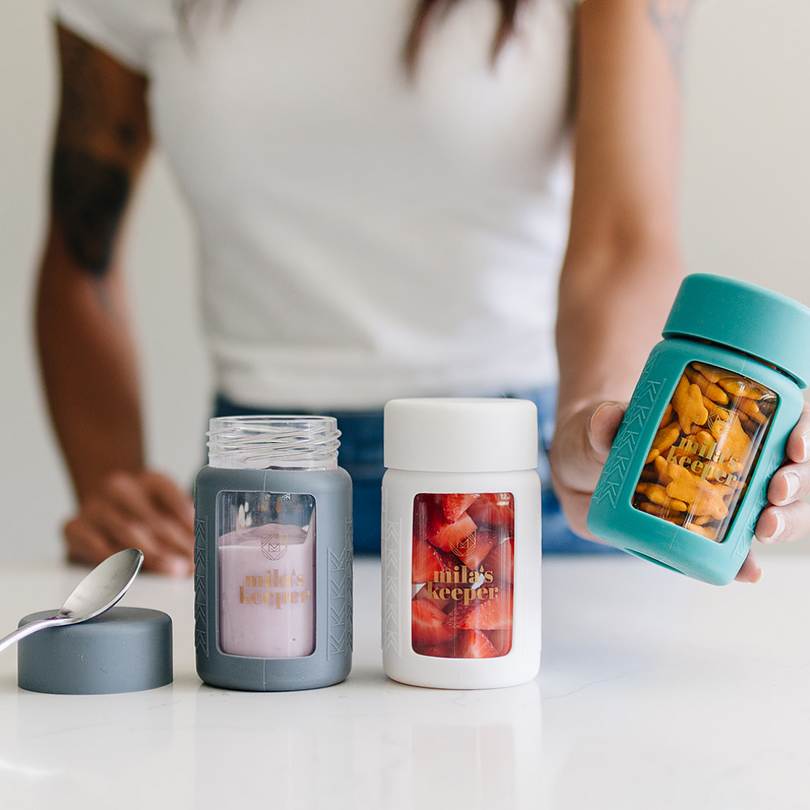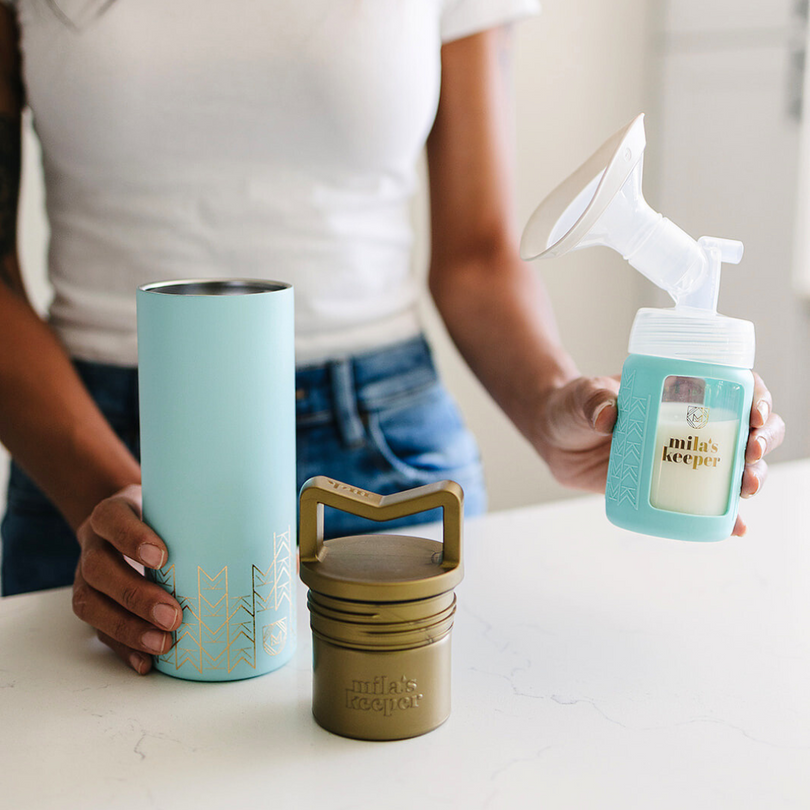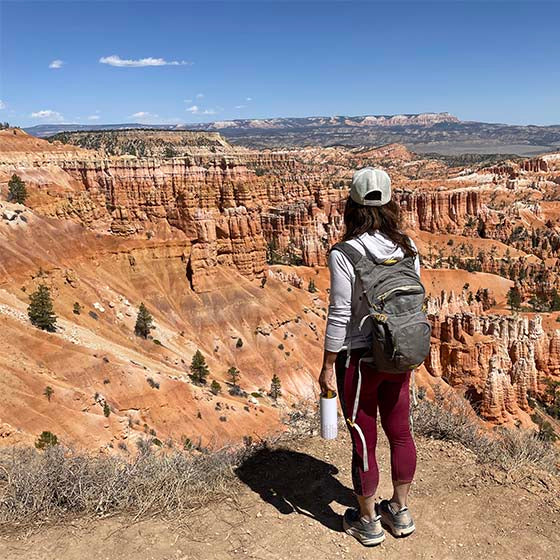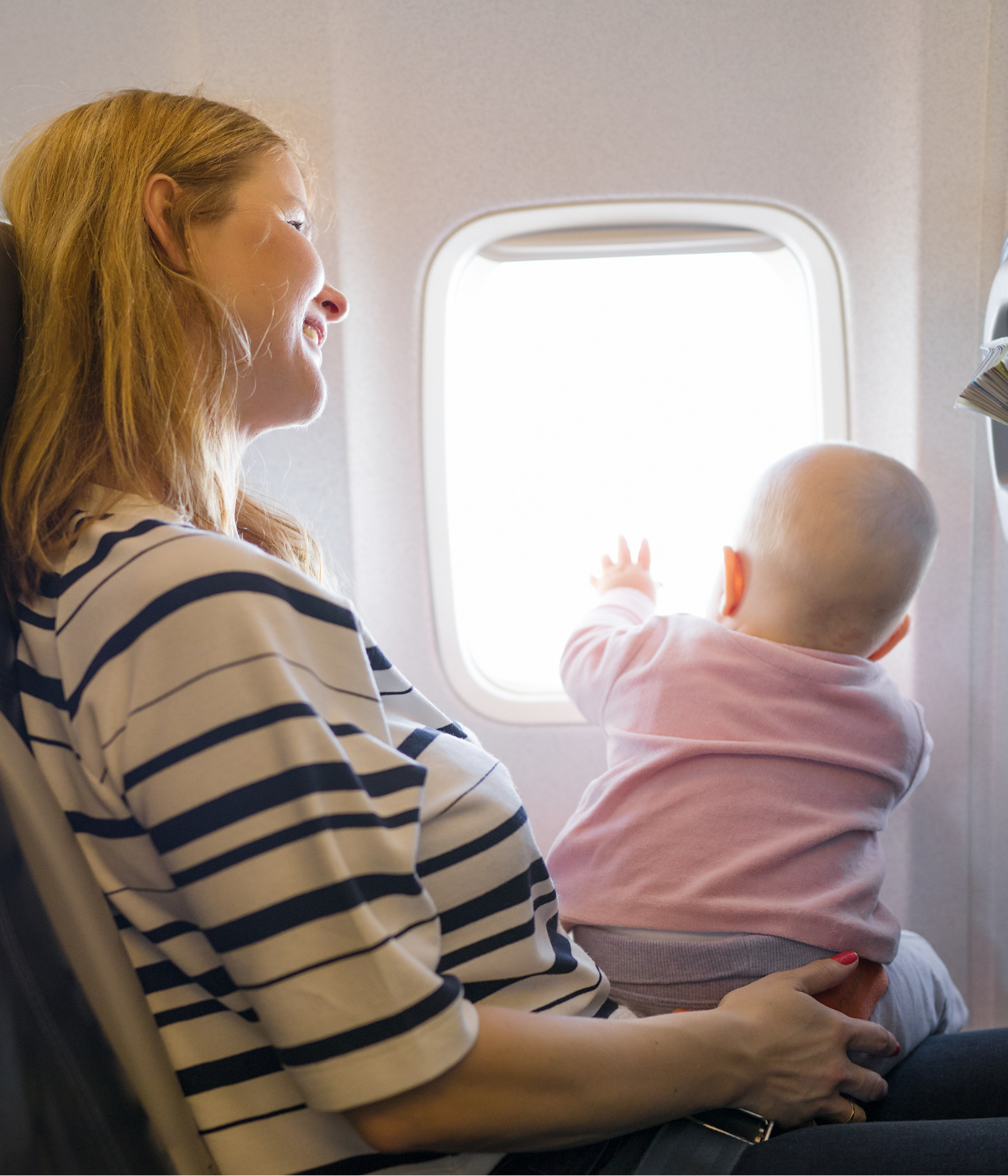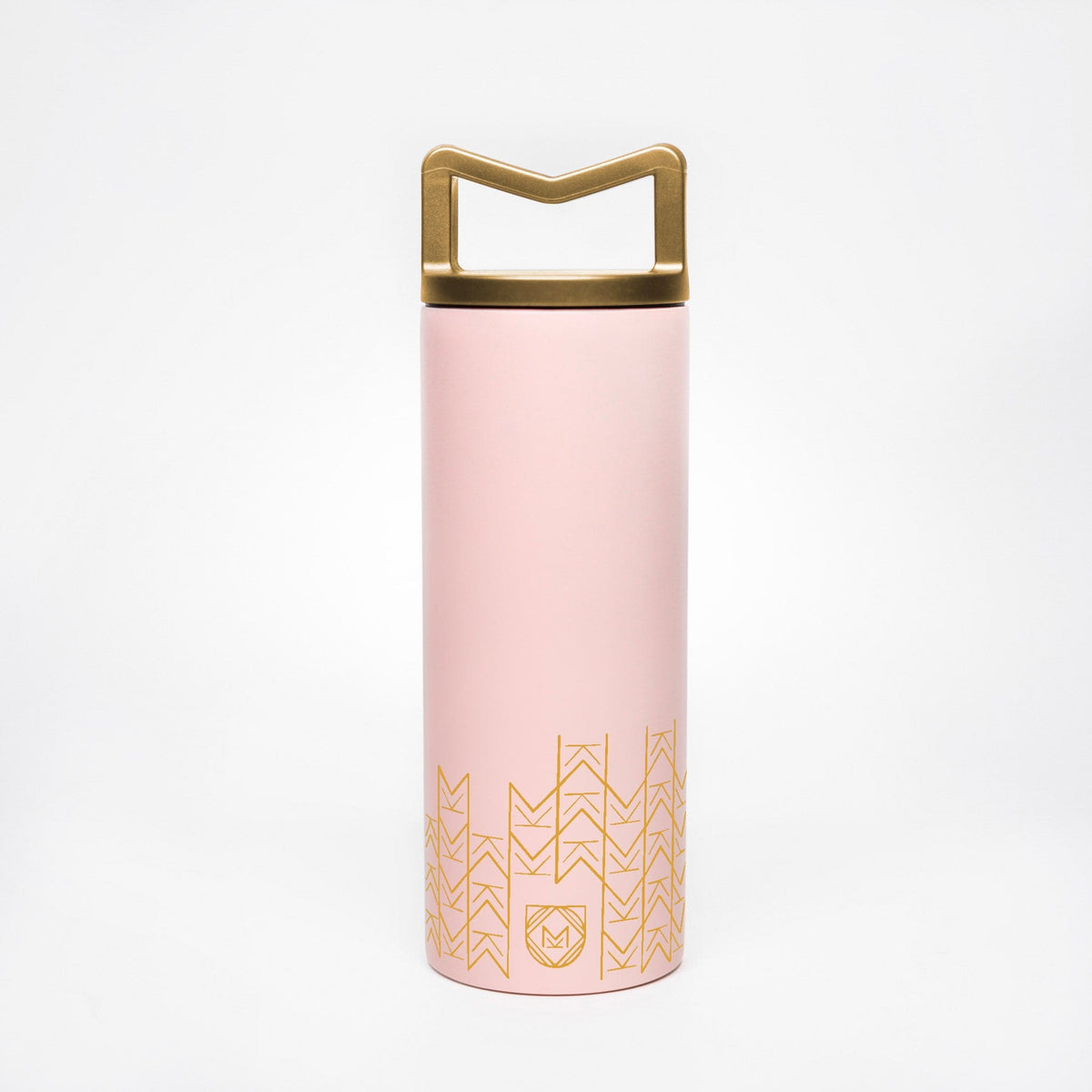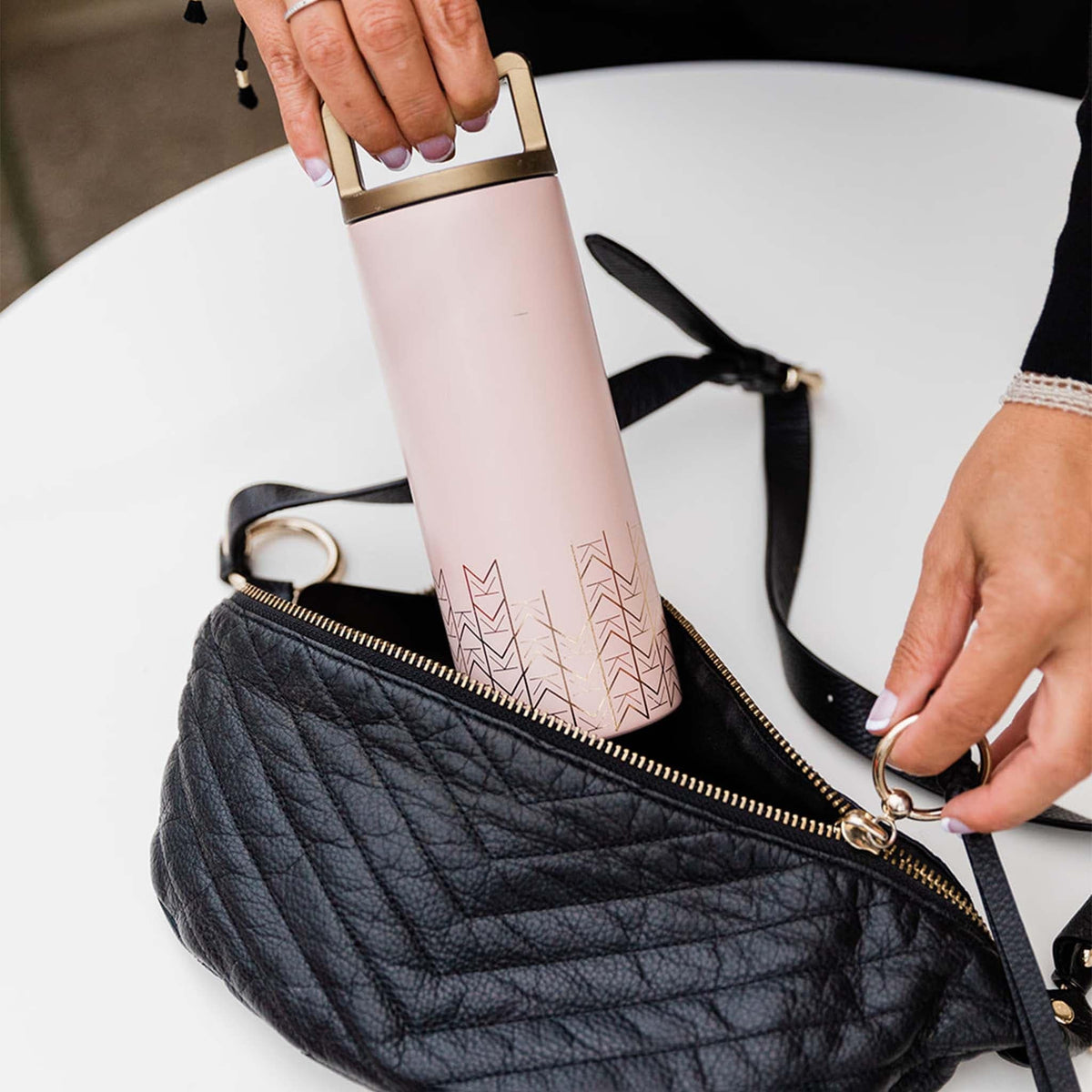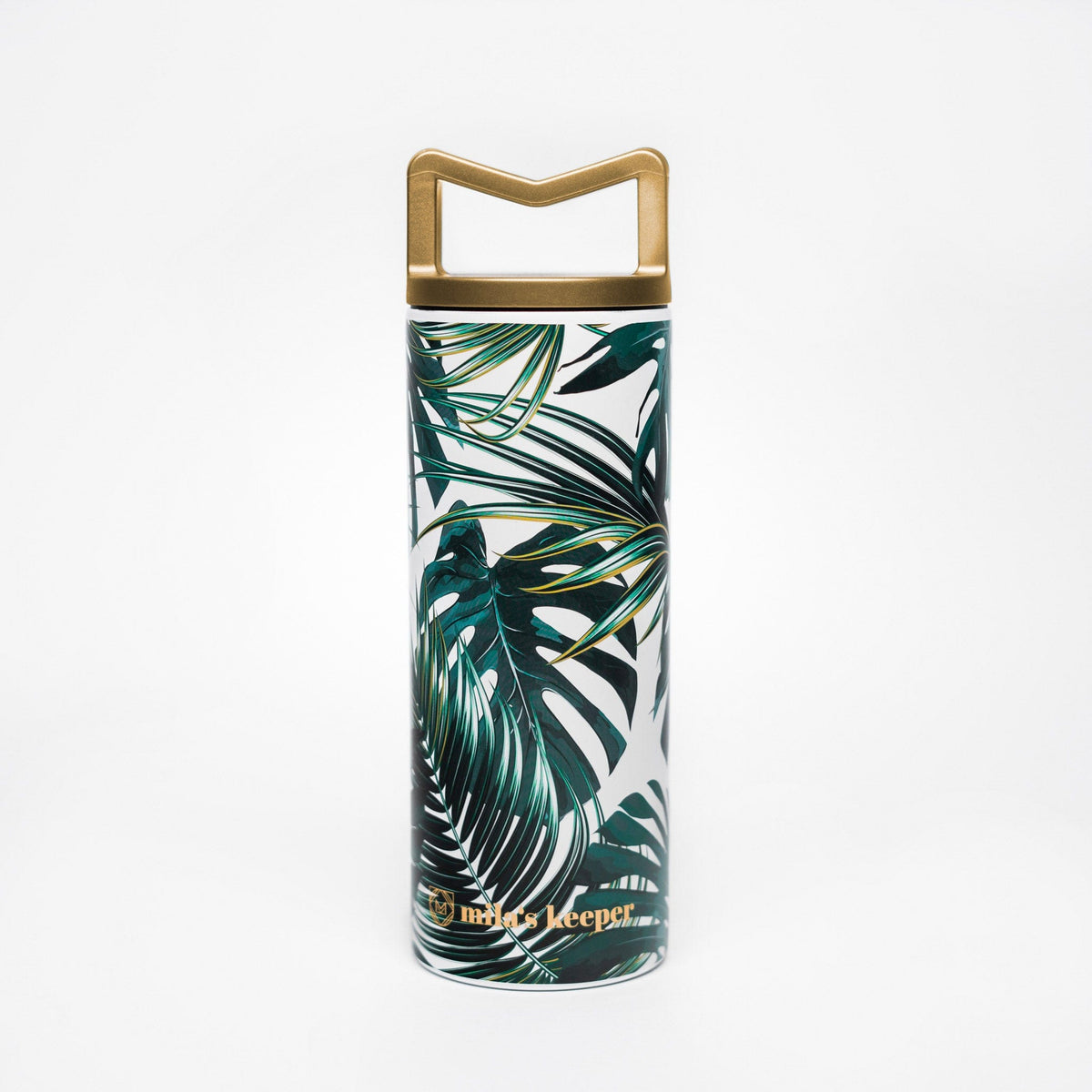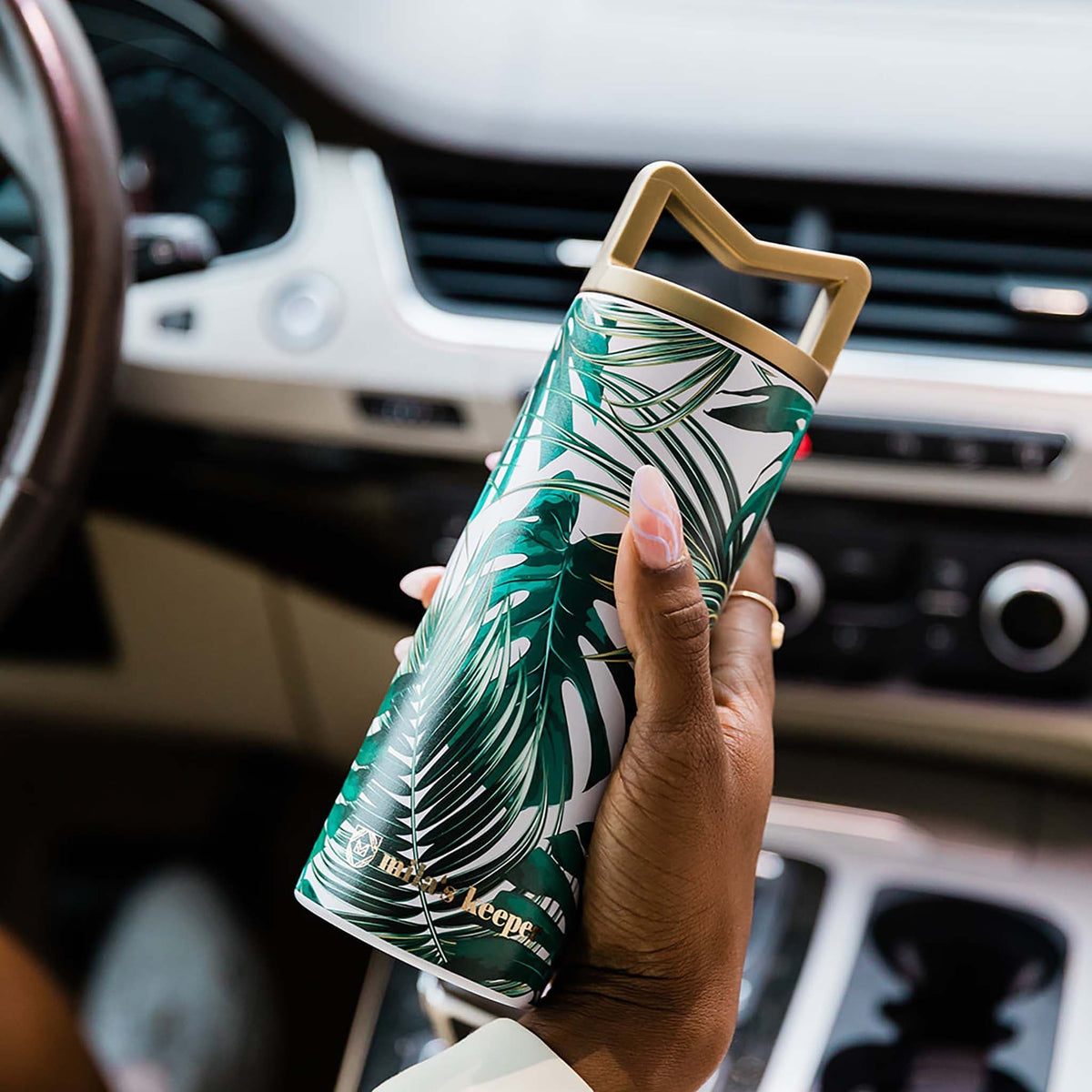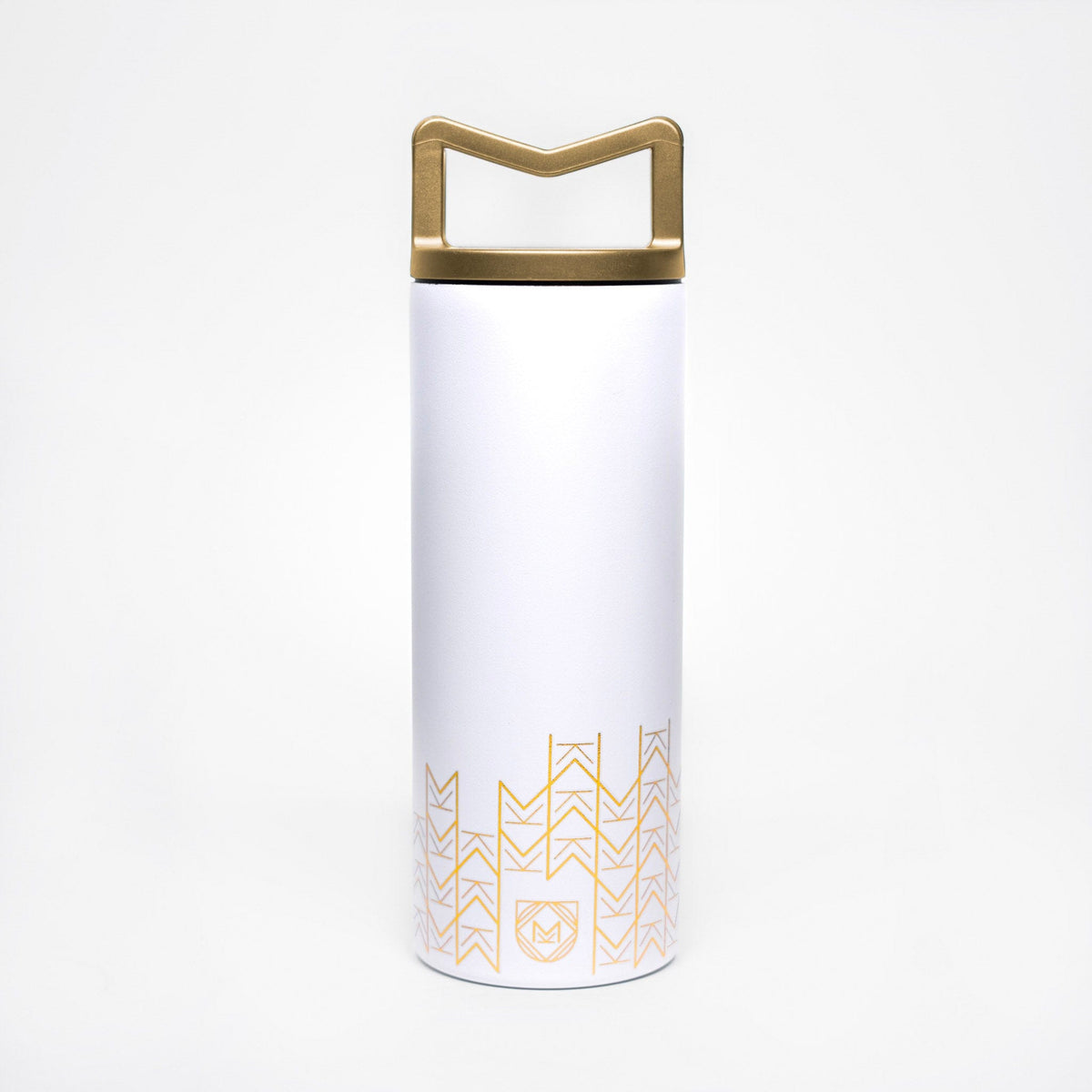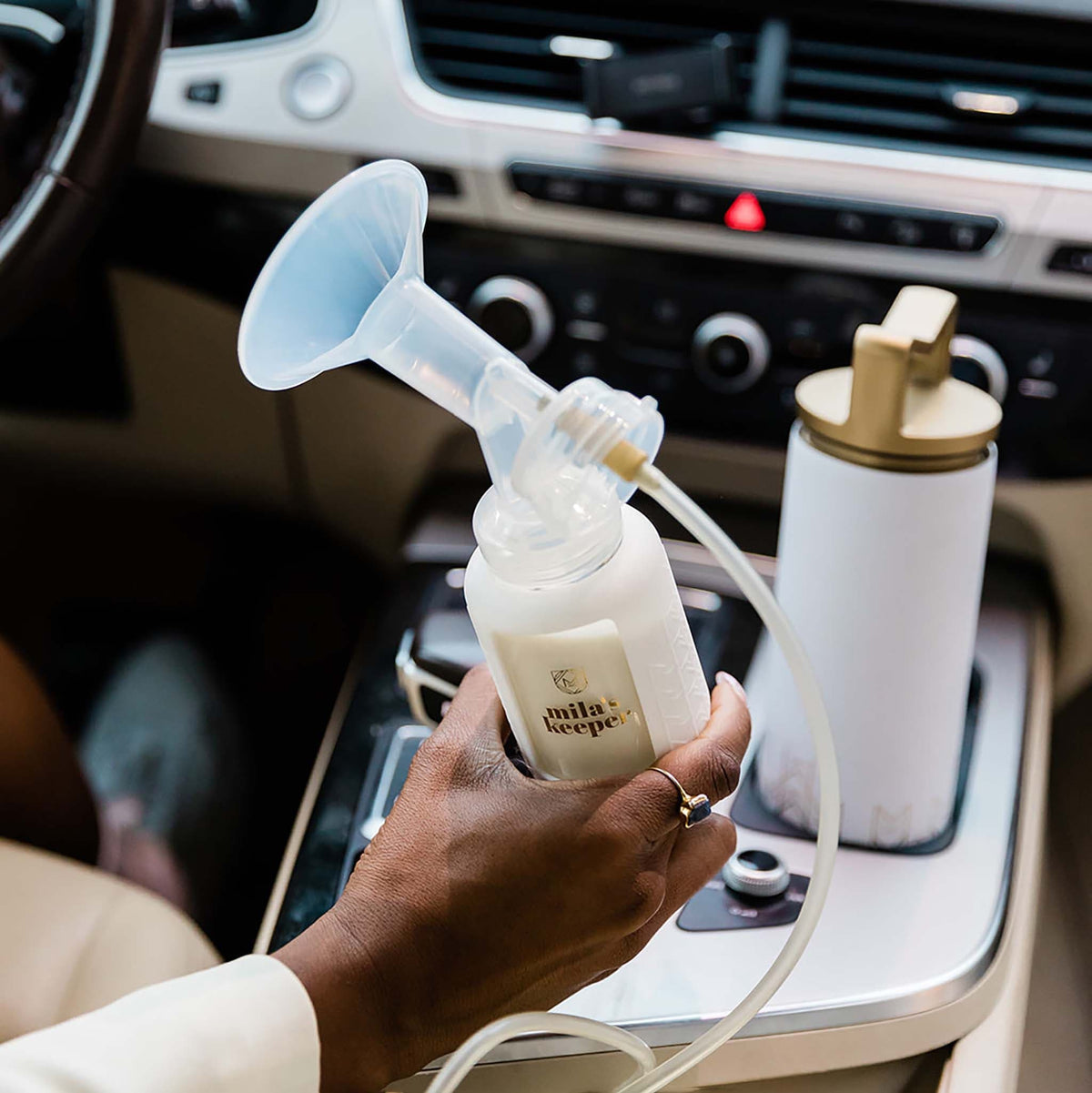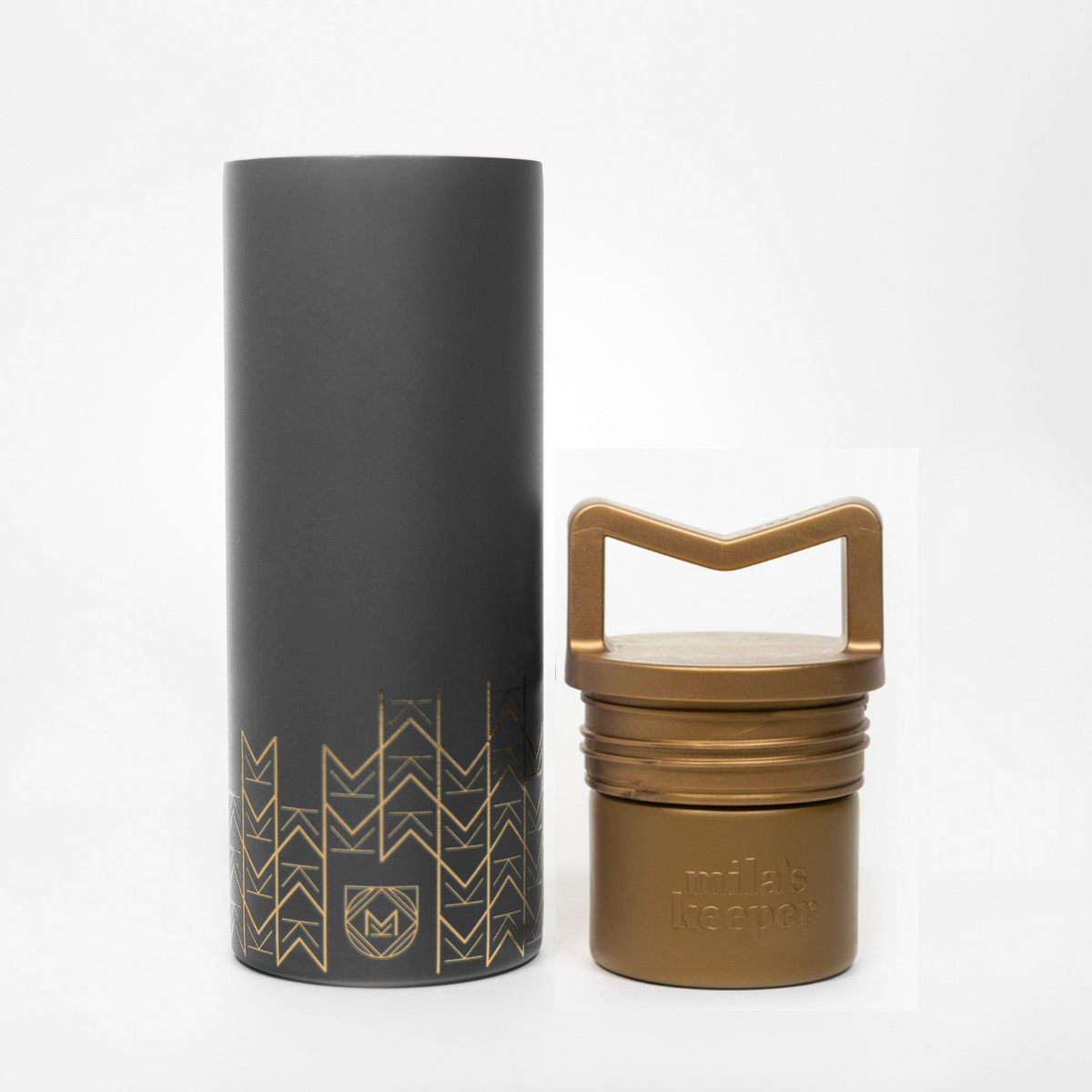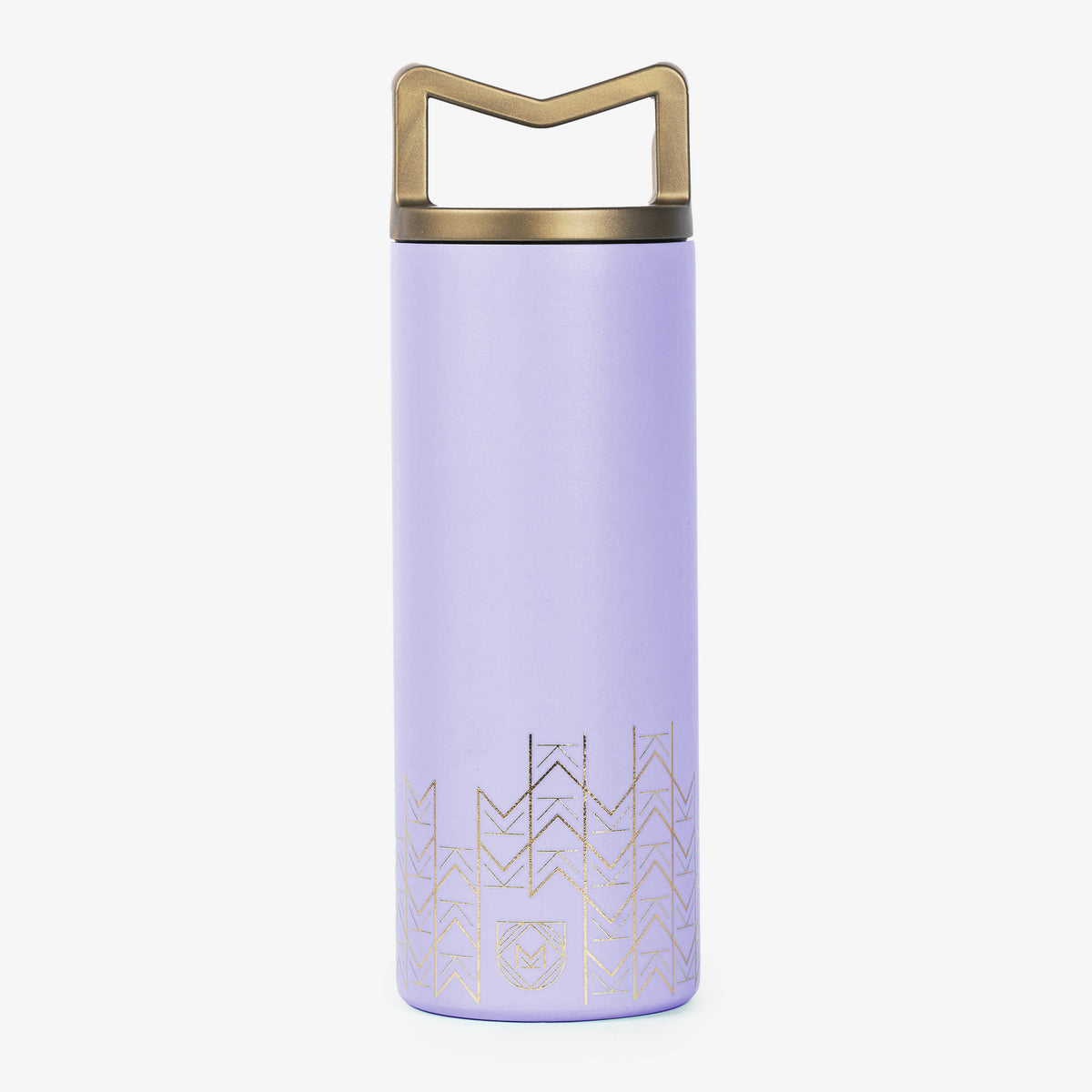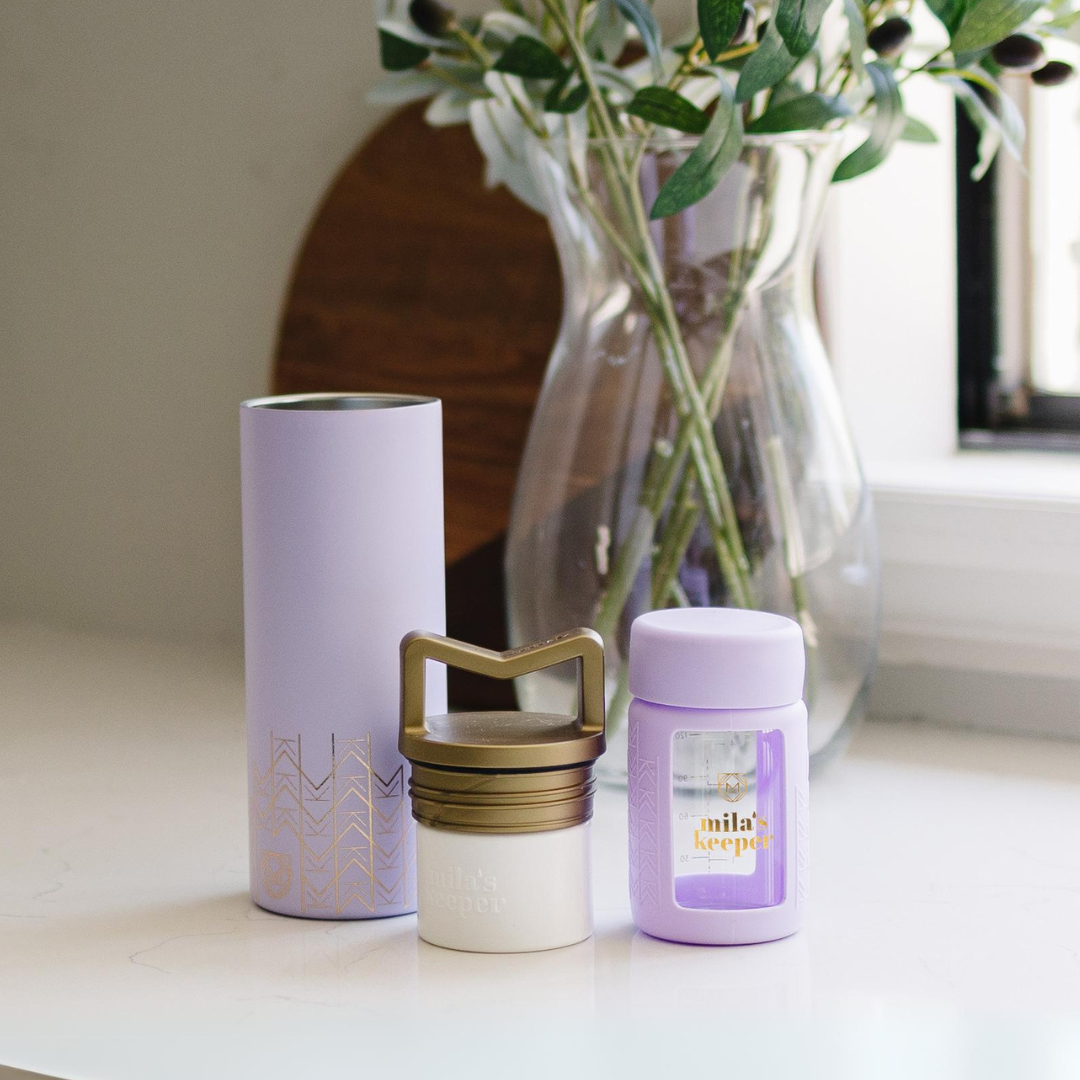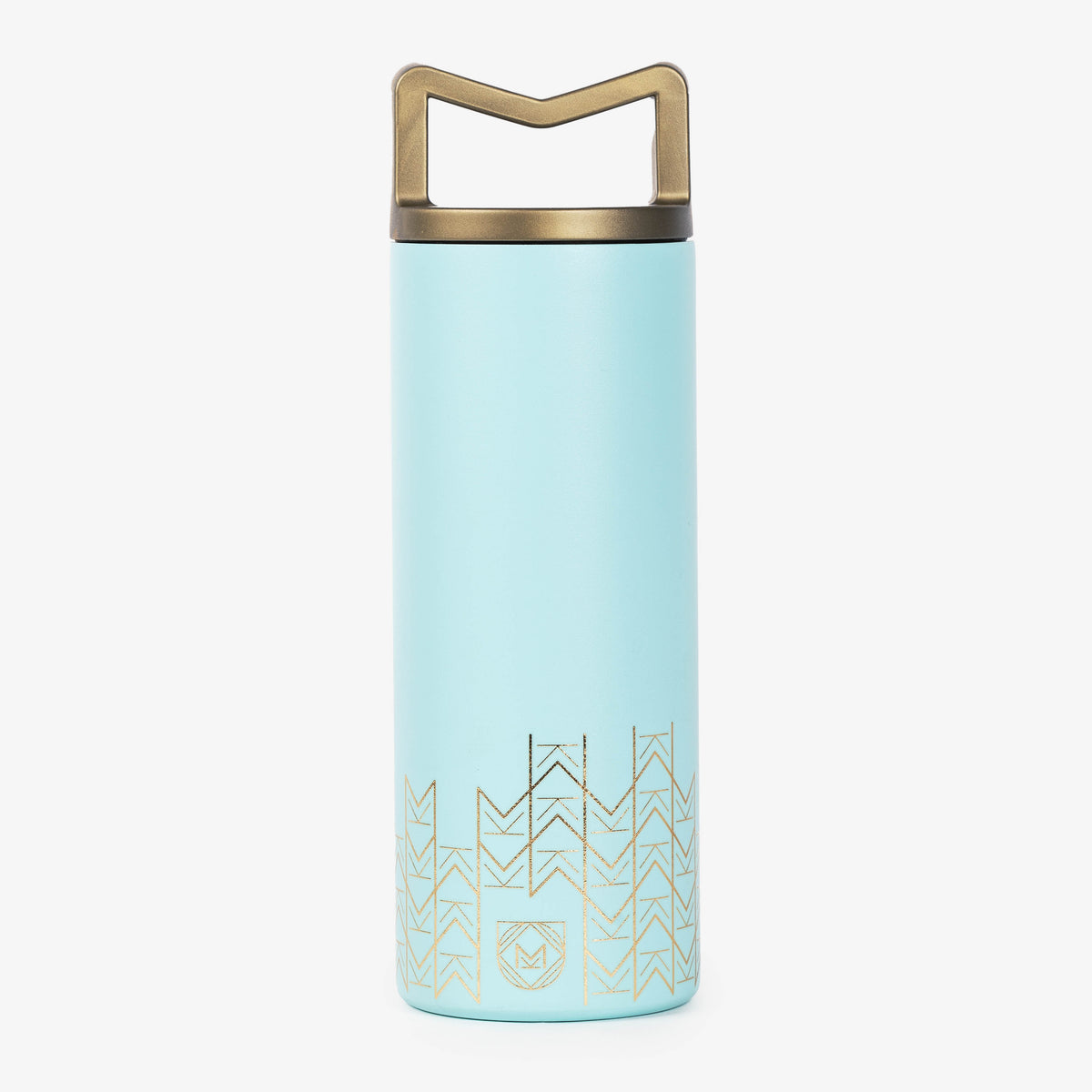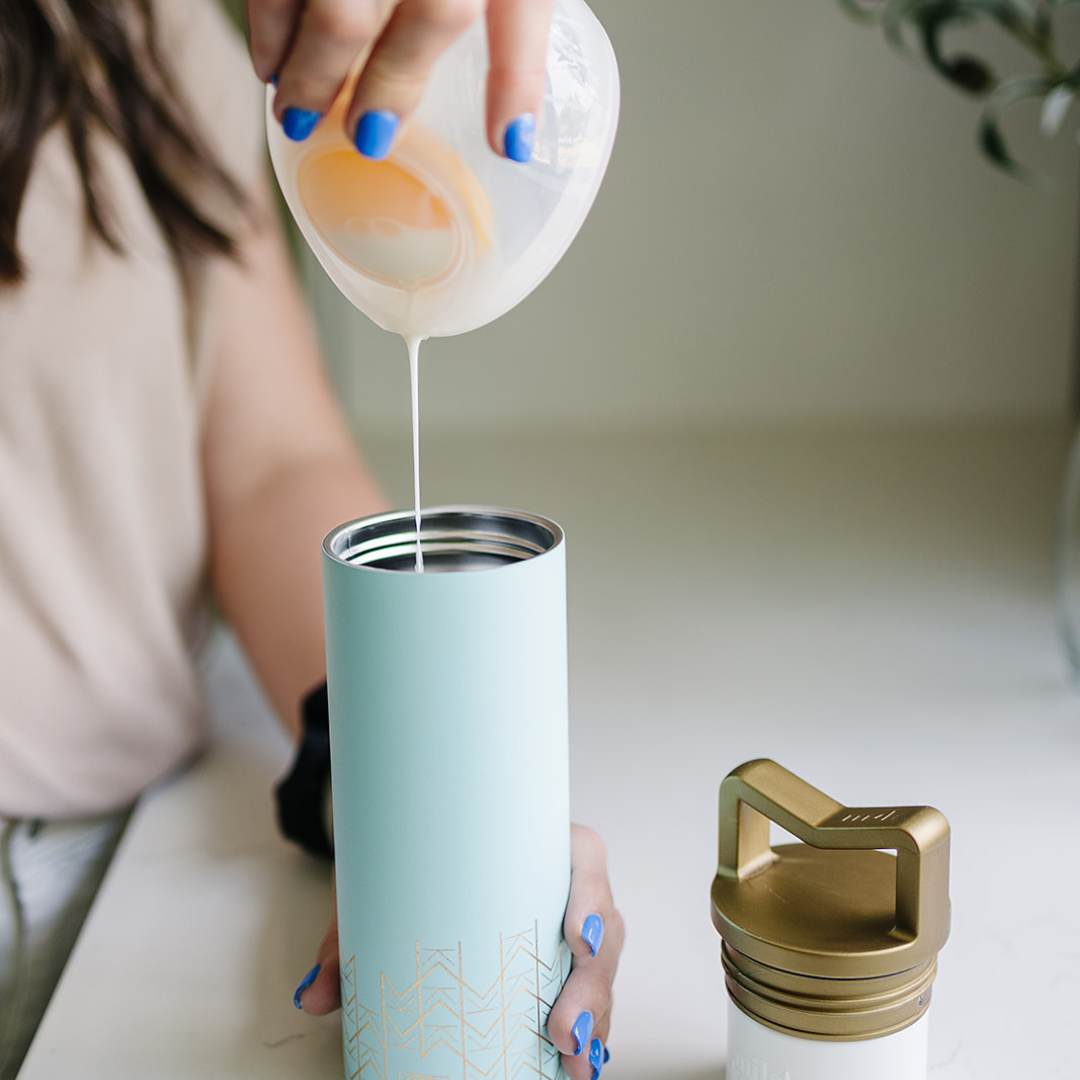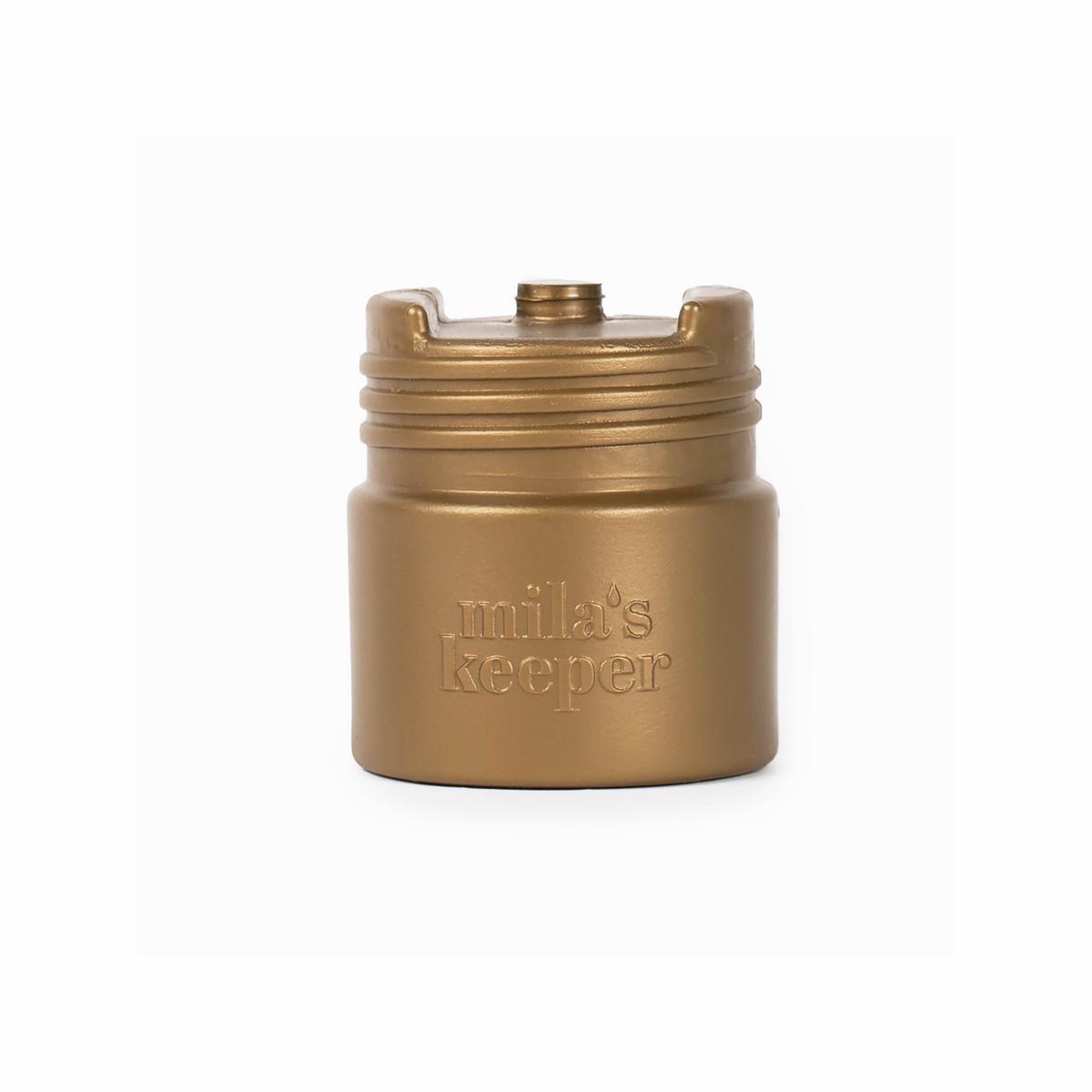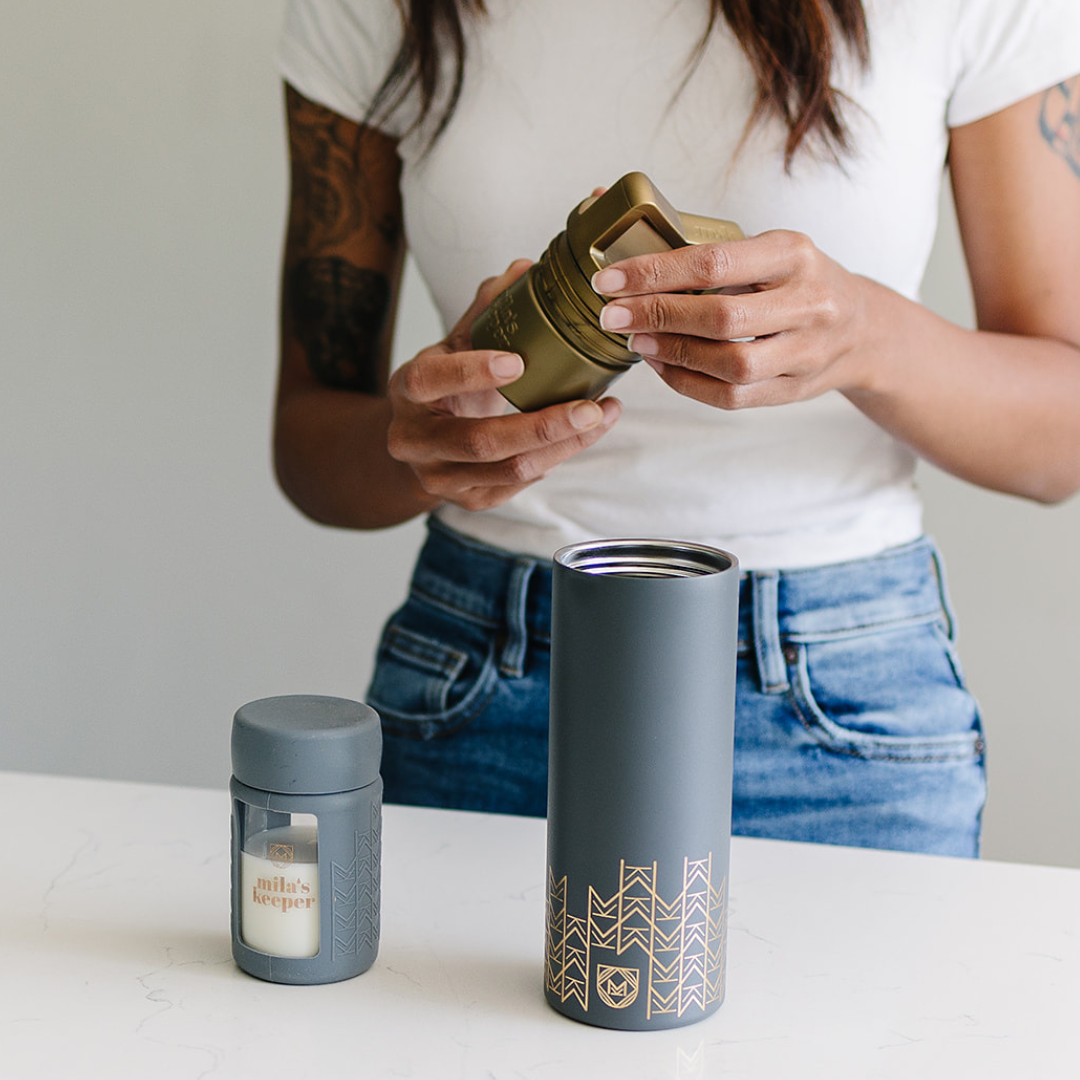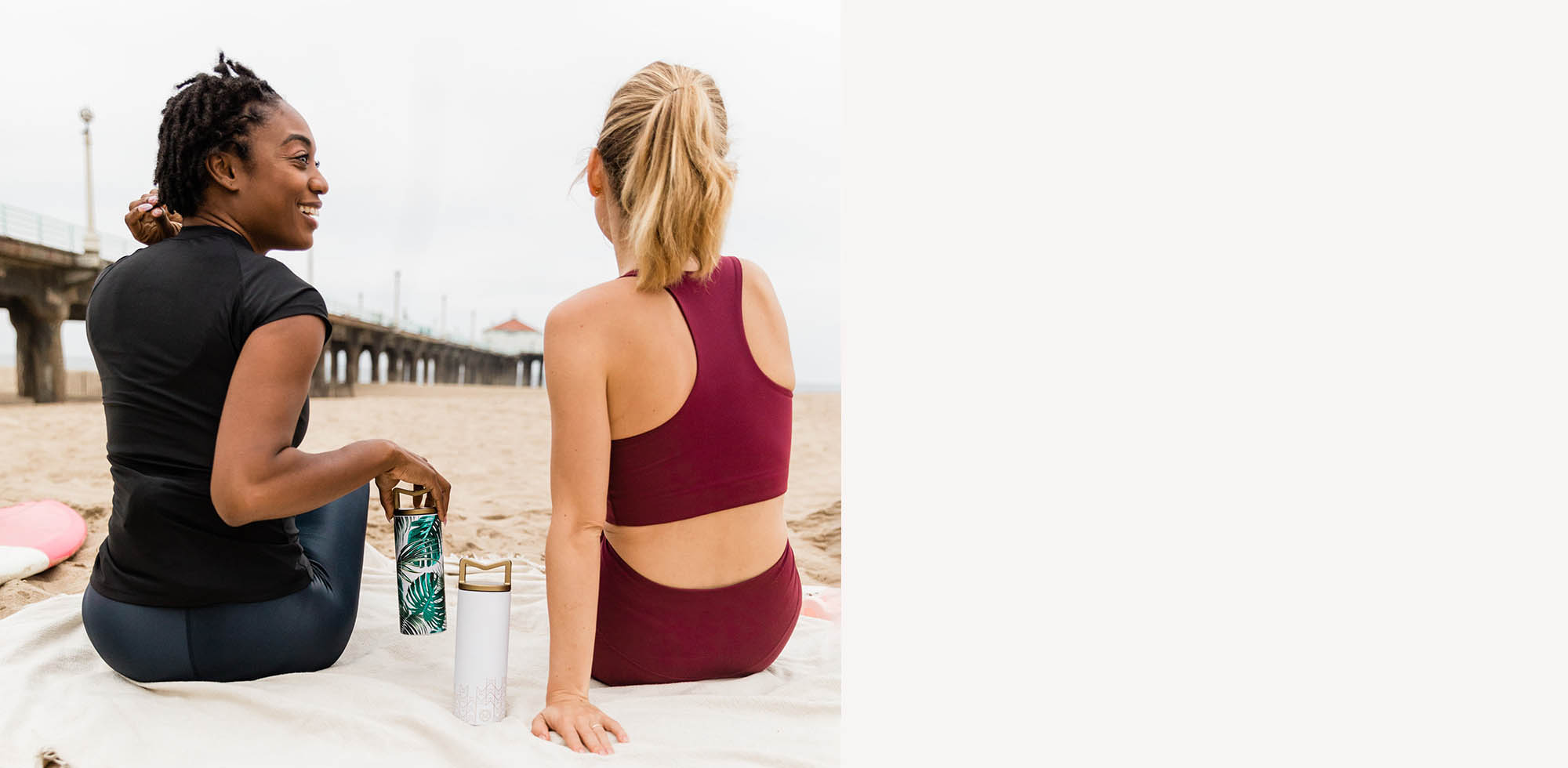There are lots of mamas on the move who want to be able to pump or bring breast milk along with them. Some may even wish to ship their breast milk.
Luckily, these things are all achievable, and we'll share what we know here below.
See Related: Breast Milk Storage Chart & Guidelines for New Moms
1. Can I carry breast milk on a plane?
Whether you're a jet setter or just need to take one flight, you may have wondered about the rules when it comes to traveling with breast milk.
Can you travel with frozen breast milk or freshly pumped milk on a plane?
The answer is YES!
Isn't it nice how a single word can provide you with a sense of relief? Still, there are a few details and tips that are important to know. But whether you're going for a long hike or traveling half way around the world, we got you.
The whole idea behind Mila's Keeper bottles and coolers is that active moms should still be able to give their babies breast milk.
Our Insulated Breast Milk Cooler is meant to keep milk cold for up to 20 hours, and you can bring it through security whether it's in your carry-on or checked luggage. We recommend carry-on for a few reasons, which we'll get to later.
According to TSA (Transportation Security Administration) guidelines, breast milk is allowed in both carry-on and checked luggage within the United States. You may need to check with the airline regarding return flights from other countries and confirm that the same rules apply.
The TSA website states that "formula, breast milk, toddler drinks, and baby/toddler food (to include puree pouches) are considered medically necessary liquids." Because they consider human milk to be liquid medication, you can carry more than 3 ounces.
Also allowed are accessories needed to cool formula or milk such as ice packs, gel packs, or a cooler like ours with a BPA-free cold pack.
Our cold packs - which actually freeze colder than ice - attach to our Insulated Breast Milk Coolers. You can store breast milk directly in the cooler itself, or in one of our glass breast milk storage bottles that fit perfectly inside.
So pack that precious liquid gold in your carry-on bags and bon voyage!

2. Must I have my infant in tow to bring frozen breast milk, fresh breast milk, a cooler bag, or breast milk bags on a plane?
Although it could be fun to lift your infant in the air like a young Simba while Circle of Life plays in the background, the answer is No. No, you do not need to present your baby as any sort of proof that you have these medically necessary liquids and associated accessories (whether it's frozen breast milk, or dry ice designed to keep breast milk frozen).
This means you don't have to worry when flying solo.
The TSA website states that you do not need to have your baby present to bring breast milk, formula, or other such supplies. This is good news for moms who have been away and are heading back to their little ones, or whatever the case may be.
Maybe your partner will travel with frozen breast milk, or you need an empty container for freshly pumped breast milk that you're planning to express in a few hours. The rules allow for all of this.
Breast milk containers and cooling accessories are allowed regardless of whether they already contain breast milk, so you can bring your bottles, breast pump, and cooler along with you no matter what.
Remember to remove these items from your carry-on bag so they can be screened separately from your other belongings.
3. Should I tell a TSA agent I'm transporting breast milk?
Since there may be changes in policies around bringing water or other liquids on board an airplane, it's always best to tell one of the TSA officers what you have in your carry-on baggage.
You are allowed to transport frozen breast milk and the dry ice that is needed to keep it that way. You can have fresh milk in a cooler bag with ice packs or stored in one of Mila's Keeper Breast Milk Coolers.
However you're moving the goods is all good. It's just best to inform the TSA officer at the beginning of the security screening process what liquids (or frozen milk or ice packs) you may have.
Again, you should take these items out of your carry-on bag so they can screen them separately.
Although it's not a requirement, they recommended that formula or breast milk be transported in clear, translucent bottles as opposed to plastic bags or pouches. If you're using our clear glass milk storage bottles, they have a convenient see-through window in the silicone sleeve that makes this step super easy.
TSA's Bottle Liquid Scanners might not be able to screen the milk stored in plastic bags or pouches. The officers may ask you to open the bags to test the contents for explosives or prohibited items, but won't and shouldn't place anything into the liquid. You can ask the officers to put on a clean pair of gloves to minimize potential contamination.
Alternatively, if you don't want these items to be opened, you should inform the officer. There are additional steps they will take to clear the liquid. This might include sending you through Advanced Imaging Technology screening or doing an additional screening of your other carry-on property.
If you encounter an officer that is not willing to cooperate with your requests, you can always ask to speak with a supervisor. Even though we've all seen the memes, sometimes you do have to speak with a manager.
To find out about special accommodations or ask other questions about the screening process contact TSA Cares online at http://www.tsa.gov/contact-center/form/cares or by phone at (855) 787-2227.

Bonus: Breastfeeding In Asian And Asian American Communities
4. Are there problems traveling with a breast pump?
Trying to pump while traveling poses some challenges, but many airports and airlines are adapting to the needs of nursing moms.
TSA includes breast pumps under the category of medical devices. They should not count as one of your carry-on bags, but you may just want to contact your particular airline to check on the details.
Since the pump will go through the same screening process as your other breastfeeding supplies, you can tell the TSA agent what you are bringing through security. Most agents should be pretty familiar with these devices.
While you may be tempted to check your pump, breast milk cooler, or freezer packs on a short flight, you never know when there might be delays or lost luggage. Putting your essential baby-related supplies in a carry-on bag is recommended.
You should be able to place your pump in the overhead bins, but it's most convenient to stow it under the seat in front of you.
5. Where can I pump before or during a flight?
If you plan to pump while waiting in the airport, there are a few options.
For a long time, the only places to pump or nurse were the women's restroom, a family restroom, or an empty gate area.
With the passage of the Friendly Airports for Mothers Act (FAM) of 2017, commercial airports are required to provide lactation rooms at each terminal building. This could be a clean private room with a sink, changing table, and a place to sit, or one of the nursing pods like the Mamava pod, which is a small pod with a bench, table, and power outlets.
If there isn't a lactation room near your gate, you could try to pump in a restroom stall, though it's not an ideal environment. It may be preferable to pump at your gate where there is a power outlet. With a nursing cover and ambient noise, you may be able to pump relatively discreetly.
With the FAM act in effect, you should be able to locate a lactation room, so try to squeeze in a pumping session before boarding.
Pumping on the plane is a little more challenging.
Your options on the plane are pretty much limited to your seat or the restroom. Unless you're traveling in first class, these are some rather small spaces. Either way, you'll probably want to have some cleaning wipes handy to keep things as sterile as possible.
If you have a pump you need to plug in, make sure your outlet is working. It's never a bad idea to bring a backup manual pump.
If you're traveling with your baby and want to nurse, putting them in a sling or wrap can be conducive to in-flight feeding. When the changing air pressure makes a baby fussy, it's a great time for a breastfeeding mom to nurse.
6. How to keep milk cold while traveling
We all know that the next worse thing about spilling your breast milk is the risk of spoiling your hard-earned breast milk! This is perhaps why it is the number one question moms ask as they are planning to travel. It is understandable given that CDC breast milk storage guidelines tell us that milk can be left out at room temperature for four hours maximum. This is obviously not enough time if you are traveling.
In addition, fresh pumped breast milk starts at body temperature above 90 degrees Fahrenheit so you need a storage solution that will not only keep your milk cold - but also bring your breast milk temperature down. So let's go over how to pack breast milk for a day out in the friendly skies to be sure we're keeping breast milk cold while traveling.
You can transport your breast milk using a hard-case insulated cooler with ice packs. If you plan to pump large amounts of milk this might be an option. Hard-case insulated coolers come in varying sizes and quality. Ice packs also vary in sizes and quality, We recommend testing the hard case cooler with other drinks beforehand to see how long warm liquids can be kept safely in your cooler. In addition, the larger the ice pack the longer duration you have to keep your liquids gold. A good rule of thumb is to use equal part ice pack with breast milk. So if you are pumping 8 oz, you should try to find at least an 8 oz ice pack.
Another option could be your soft case insulated coolers. Generally we do not recommend these as the insulation properties are limited and tend to be unreliable unless you only plan to be away for 4-5 hours. Given the insulated properties of soft case insulators are not as effective, we would recommend a higher ratio of ice pack to breast milk.
The cons of both the options above are that they tend to be bulky and are more challenging to travel with especially if you are managing other things like your baby and luggage. They are also untested options so you will need to test the performance of your coolers and ice packs beforehand to feel safe.
This is why Mila's Keeper created an option for breast milk that carries your breast milk in a compact, portable insulated cooler. The MilKeeper uses the highly effective insulation technology of a double-walled stainless steel vacuum bottle to keep your milk cold. In addition, its patented design includes an ice pack that freezes colder than ice to bring your breast milk temperatures down and kept cold and safe in your cooler for up to 20 hours. The cooler holds up to 12 ounces and comes with a glass bottle that can be used to pump directly into and fed to your baby.
7. Can you ship frozen breast milk?
Traveling with frozen breast milk (or milk that's been freshly pumped) is one thing, but shipping frozen breast milk is another.
You know you'll need to keep breast milk frozen for an extended amount of time, but is dry ice best, or are frozen gel packs better? How does one ensure all the milk will stay frozen?
If you are going to be separated from your baby for a length of time, or if you want to have a stockpile of frozen breast milk upon your arrival, you may need some tips on properly packing breast milk.

Let's discuss some services that may be worth looking into when it comes to shipping frozen breast milk or soon-to-be refrigerated expressed milk.
There's a company called Milk Stork, which is dedicated to shipping breast milk both domestically and internationally. They send you a container to fill up with your frozen milk (or fresh milk to be kept cold if that is your preference).
Their coolers for frozen breast milk don't use dry ice or have an activation button. They use high-performance vacuum-insulated panels that keep a freezing temperature once the frozen milk is packed into the cooler. The website states that their coolers can keep contents frozen for a long time (between 96 and 120 hours depending on the size).
They recommend freezing your breast milk storage bags flat so that you can more efficiently pack breast milk in the container.
FedEx also has some options if you want to ship breastmilk. You can order their refrigerated containers to be delivered to you, which you then fill up with milk bags, and drop off at a FedEx location.
Using their refrigerated shipping package - which is activated by a single button - means you won't have to find freezer packs, gel packs, or dry ice. You won't need to wonder if the cooler bag you currently use to store milk will be sufficient for shipping across the country.
If you ship or travel with frozen breast milk, you should remember an important rule. Once human milk has been thoroughly thawed, you should NOT refreeze it. If it's still partially frozen (meaning there are visible ice crystals) you could be okay, but when in doubt, throw it out.
If you plan to send stored breast milk that won't be consumed within a day of it thawing out, make sure you've arranged for a way to keep the frozen breastmilk frozen.
7. Traveling by car with frozen breast milk
Since we've talked about how to ship breast milk, bring it with you on a plane, or express it in a pod at the airport, we thought we should touch on traveling by car.
Who doesn't love a road trip? While there are some moments where we question our sanity, taking a car ride with the family can be fun.

If you take to the road rather frequently and want to keep breast milk cool, you could invest in a portable mini fridge. It makes traveling with breast milk much better. Breastfeeding moms can store breastmilk as well as other food and drinks that require refrigeration.
If you're traveling with frozen breast milk, you will want to pack it in a cooler filled with ice packs or dry ice. If you do use dry ice, make sure it doesn't touch any breast milk bag or it could rip the plastic (and ruin that batch).
If you are not using dry ice, there are a few things to do to maintain a colder temperature. Make sure the cooler is filled to the gills. If you don’t have enough of a milk supply to fill it completely you can add more ice, or freeze water in a quart-sized bag (or several), to fill it the rest of the way.
Keep your cooler closed until you arrive at a location where you'll be able to transfer the frozen milk to a freezer.
Safe travel, and may the milk be with you.
Before you hop on your next flight, check out this TSA video that discusses some additional screening procedures to think about when traveling with human milk.
Keep Reading: Glass Vs. Plastic Baby Bottles: The Debate
--
A female-designed and female-run company, Mila's Keeper is on a mission to empower women to thrive during their breastfeeding journey by offering reusable, eco-friendly breast milk storage solutions for their day-to-day needs. Get the latest tips and info on Mila's Keeper products by following us on Facebook, Twitter, Instagram, Pinterest, and LinkedIn.

